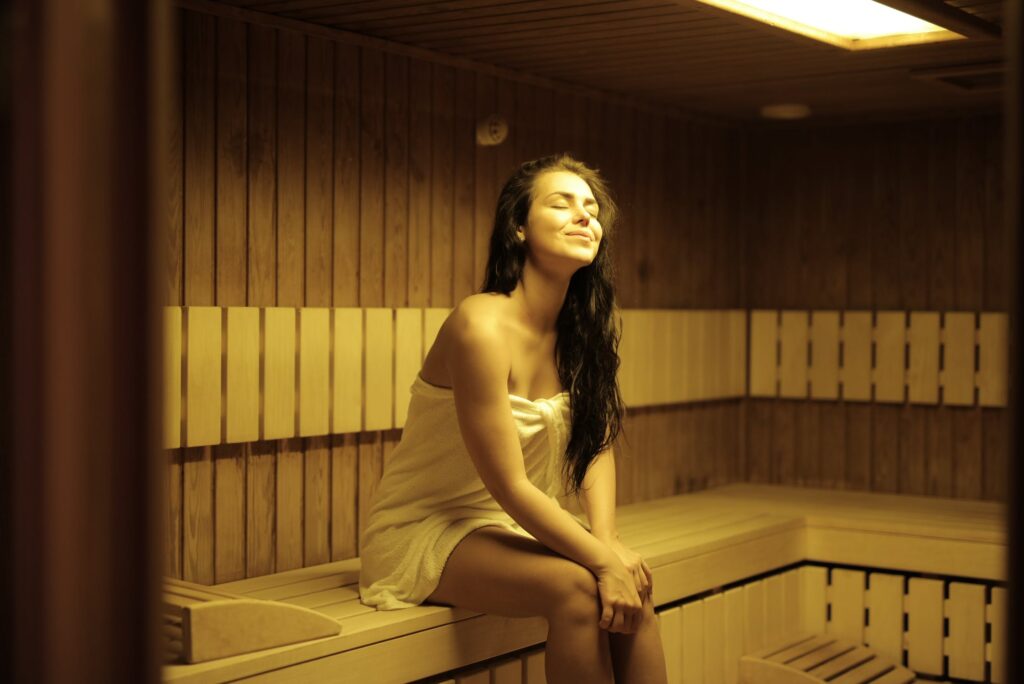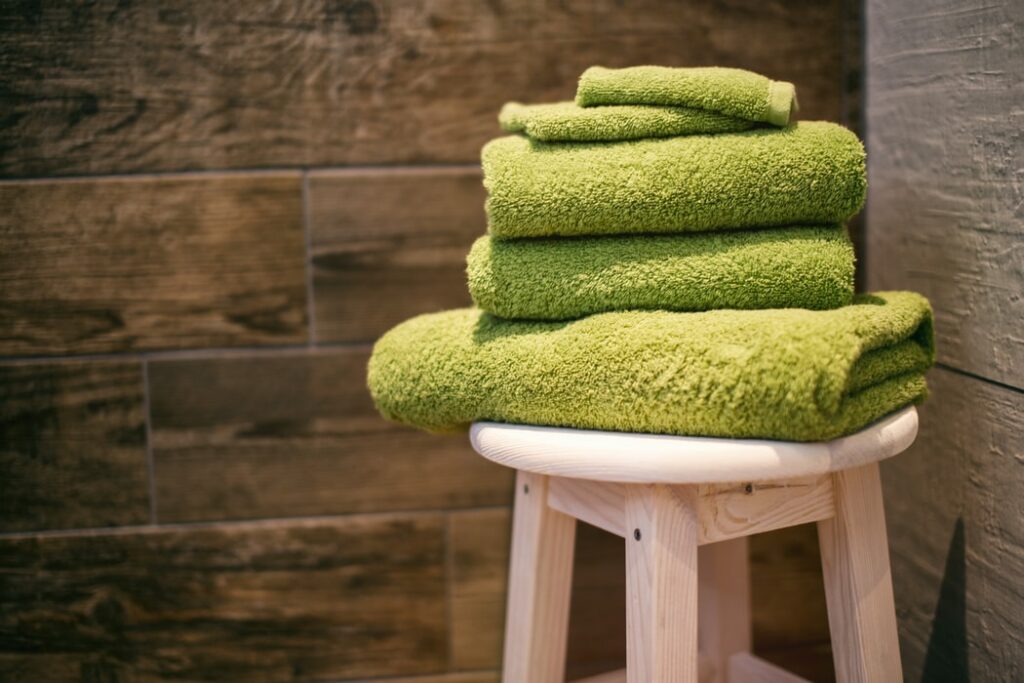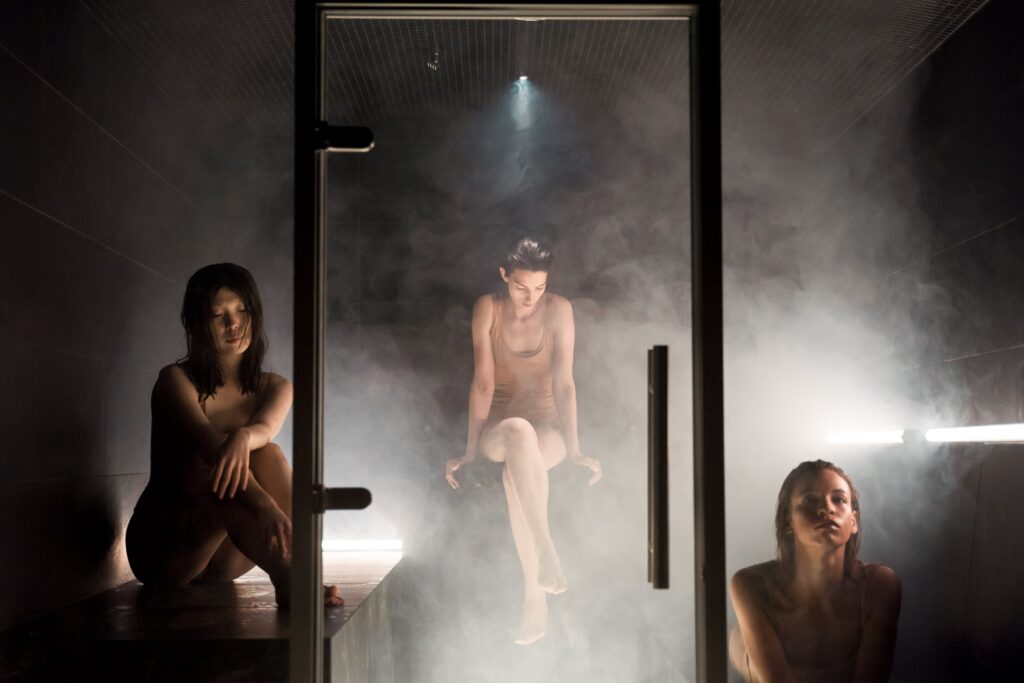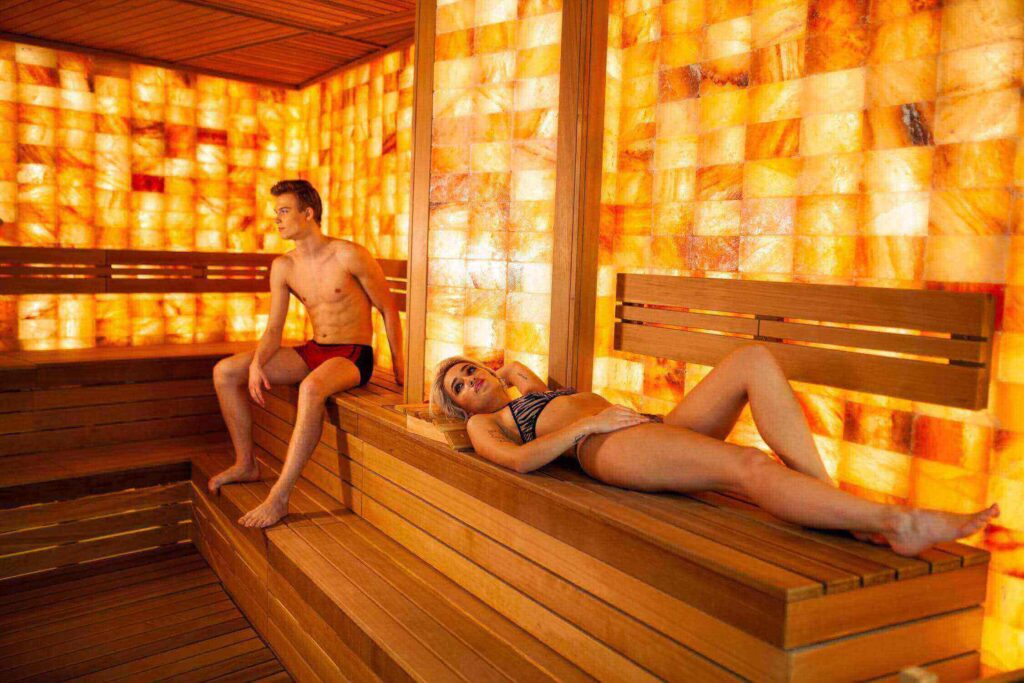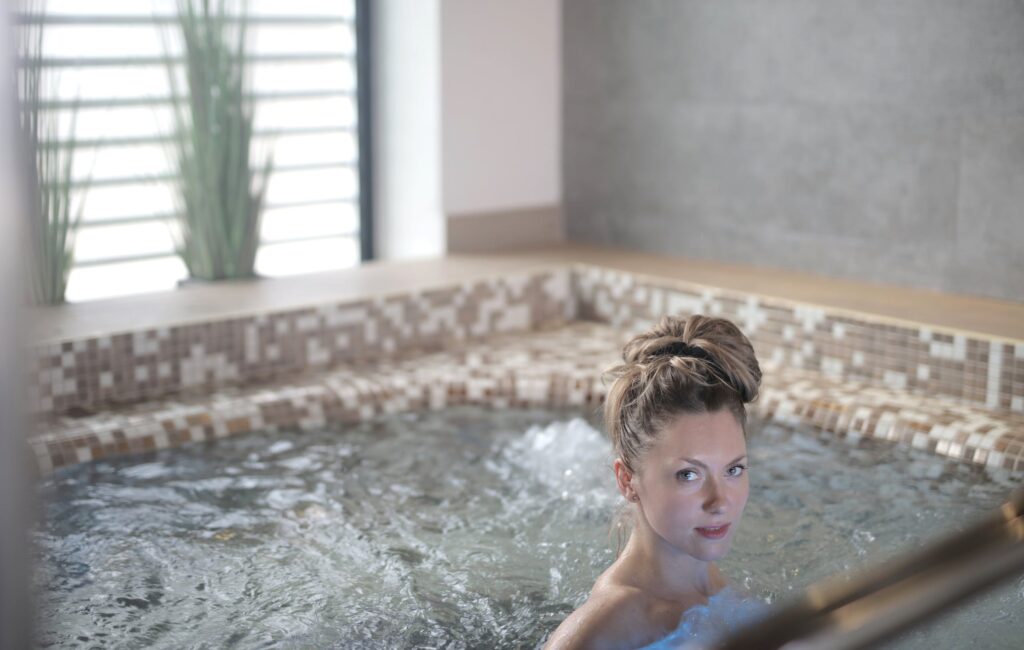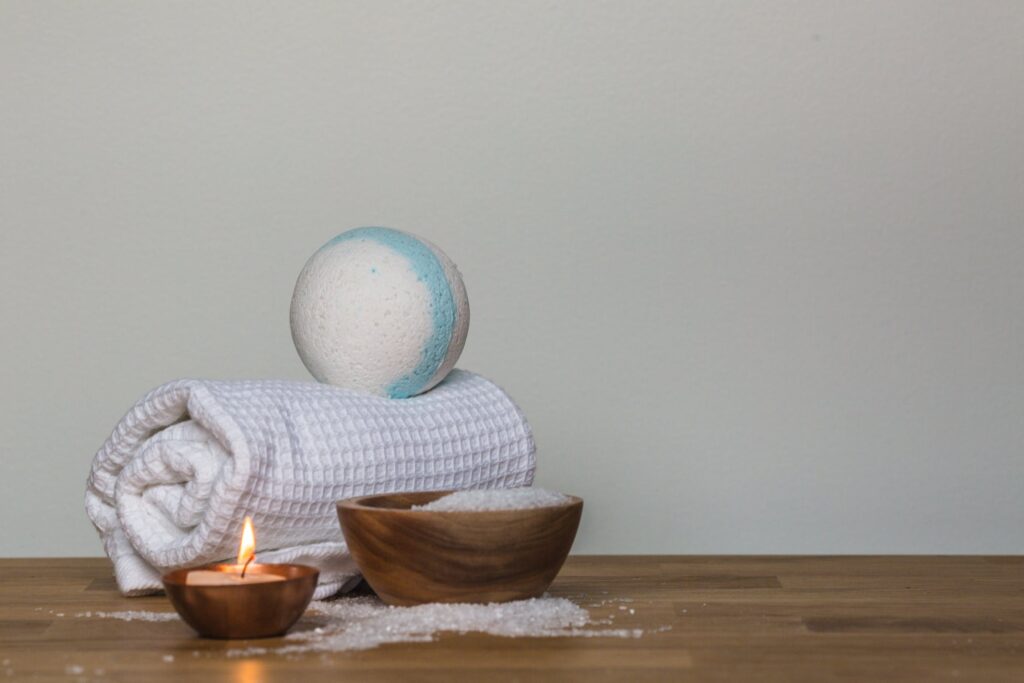Owning a personal sauna brings with it a number of questions regarding its operation and the way it is installed. Figuring out how your sauna will interact with the preexisting structures of your home is necessary if you want it to feel like a natural extension of the rest of your home. Nobody wants the walls or floor in their home to be damaged. The best part is that we are fully prepared to respond to any inquiries you may have regarding drainage and ventilation. The even more encouraging news is that it is much simpler than you might initially imagine!
A sauna room, in contrast to a steam room, which often has very little airflow, needs to be able to breathe. The level of comfort in the space is directly proportional to this factor, and for this reason, natural airflow circulation should be incorporated into the design of every sauna room. Adjustable sauna vents are a common feature, and they play an important role in the circulation of air throughout the sauna. In a sauna, the airflow should consistently bring in new oxygen while also ensuring that the heat is distributed evenly around the room. Have a look at the Portable Sauna Melbourne options we have available to find a solution to your problem.
Intake and exhaust are necessary components for the proper functioning of the airflow system. Due to the fact that hot air rises, the exhaust vent ought to be positioned somewhat high up and close to the roof of the sauna. The cold air intake ought to be situated lower, closer to the ground. When designing a sauna, it is common practice to provide a gap of between one and three-quarters of an inch between the floor and the base of the door in order to allow for the escape of cold air. An adjustment louver is provided by the upper vent, which allows for the flow of air to be controlled. The ideal number of air changes per hour to give maximum comfort is six. As the temperature in the sauna rises, the amount of natural convection that occurs will also rise. The addition of steam to the production of Loyly will have the same effect as a piston, forcing air out of the vent port and thereby improving circulation.
FAQs About Sauna
Often, we overlook the side effects of these therapies, which could damage hair cells, eventually. While a sauna can dry out your hair, deep conditioning can help lockin the moisture and keep the scalp hydrated. Also, saunas will never cause permanent damage. But it might leave your hair frizzy and unmanageable.
You can go to the sauna without getting your hair wet. However, be sure to protect your hair as hair does not withstand heat well. Especially hair that has been dyed or damaged needs protection. You can protect your hair by using a sauna hat, a dampened or dry towel.
A sauna can help remove old, dead skin and give you a brighter, more youthful complexion. After your sauna, give your skin a good sloughing. The sweating and heat soften dry, dead skin and helps you shed these layers. You'll be rewarded with baby-soft skin and a bright complexion!
The amount of time spent in a sauna detox session may vary depending upon your tolerance and daily activity level. To get your body accustomed to infrared therapy, start with 10-15 minute sessions every other day. Gradually increase towards 40 minute daily sessions in the optimal temperature range.
Adding a sauna session after a heavy work out is a fantastic way to increase your body's ability to build muscles faster and more efficiently. Two major factors are at play here - human growth hormone and heat shock proteins.
Does My Sauna Need to Be Vented?
Yes, but there is no reason to be concerned because each and every one of Almost Heaven's saunas has not one, but 2 built-in vents. In order for the heater to function properly, it is necessary to have at least one vent either beneath or behind it. The second will be a sliding or spinning cover that can be modified for your comfort and will be located near the ceiling directly across from the heater. If you want some clean air to circulate through the space, that's fantastic; just open the vent. Leave the vent closed if you'd prefer to trap all of that warm air within, and there's no need to be afraid if you choose the closed vent option. The sauna room is built out of softwood, and it has been designed such that it can also breathe easily.
There is no requirement for you to install any supplementary ventilation in your sauna. If you vent the sauna outdoors, it is possible that it will take significantly longer for the sauna to reach the desired temperature because of the temperatures ranging and barometric pressures outside and inside. You only need to keep your sauna a couple of centimeters (an inch or two) away from the walls you already have.
When compared to taking a shower, the amount of moisture produced by a sauna is far lower, which means that steam and humidity are less likely to cause damage to your walls. Even if you leave the vents open, far less steam will leave the sauna as a result of the absorbent softwood that makes up the sauna room and the dry heat.
Does My Sauna Need a Drain?
It is easy to understand why the vast majority of people would rather not flood their homes. Keep in mind, however, that a sauna is not the same thing as a steam room! It is possible to generate humidity within the sauna by sprinkling water over the stones; however, the chamber itself is built from a softwood that is capable of absorbing moisture. The heat then prevents the dampness from spreading and contributes to the drying out of the room. If you are imagining yourself pouring water buckets over the heater and having it spill all over the floor, you should be aware that the heater is not designed to manage that volume of water at one time. A ladleful will do, and your ground will stay dry!
Because indoor saunas are designed to be installed over your current flooring, select a surface that can withstand high temperatures and is impervious to moisture (concrete, tile, and luxury vinyl planking are some of our favorites!). And if you prefer a floor that is custom-made to complement and blend in with the rest of your area, we have an alternative for you!) You may, at most, experience condensation, which will either evaporate after an additional few minutes of exposure to dry heat or can be readily wiped away if it does occur. The installation of a drain is not required in domestic saunas!
We Advise Venting the Sauna Back Inside the House Rather Than Out to the Outdoors
The primary cause for this is that the pressure difference outside is typically not the same as the pressure inside, which can lead to a flow of air in the opposite direction, bringing air from the outside in. In addition to this, you should always try to limit the number of openings that lead outside. Because of its construction, a sauna is best suited for heating a very small and enclosed area, despite the fact that it may appear to be an excellent choice for warming your home. In reality, the sauna will contribute very little to the overall warmth of your home. In addition, there will be no appreciable increase in the amount of moisture that is present in the air due to the presence of the sauna. Even if you pour water over the rocks in a ladle, you are only adding a very small amount of moisture to the air. Saunas provide highly dry air. The humidity in a sauna can fluctuate anywhere from 10 to 35 percent. Are you looking for the Melbourne Sauna? Stop looking; Portable Sauna has got you covered in every way.
Most essential, the air that is brought into the sauna through the aperture that is designated as the intake should be newer and cooler than the air that is already present in the sauna. The thermostat and the hi-limit sensors in the sauna heater are both influenced by fresh air. Instead, the sauna heater can detect that the room is getting too hot too soon and turn off, turning the temperature down before it reaches the level that is wanted. Additionally, the oxygen content of the fresh air will be slightly higher than that of the air within the sauna; however, you need not be concerned about the oxygen content of the air inside the sauna because the chambers are not even close to being airtight. In many saunas, the intake vent is only a wide split at the bottom of the door, and this is sufficient for providing adequate ventilation.
Can I vent my sauna heat back into my house?
It is recommended that the sauna be vented back into the house instead of to the outside of the building. The primary cause for this is that the pressure difference outside is typically not the same as the pressure inside, which can lead to a flow of air in the opposite direction, bringing air from the outside in. In addition to this, you should always try to limit the number of openings that lead outside. A sauna, despite the fact that it may appear to be an excellent way to add heat to your home, will actually only bring a negligible amount of beneficial heat to your home because, by its very nature, it is intended to heat a relatively small and confined area. Just so you know, the sauna will not contribute significantly more moisture to the air in the next space. Even if you pour water over the pebbles that make up the sauna heater, you are just adding a very small amount of moisture to the air. Saunas provide highly dry air. The humidity in a sauna can fluctuate anywhere from 10 to 35 percent.
Most essential, the air that is brought into the sauna through the aperture that is designated as the intake should be newer and cooler than the air that is already present in the sauna. The thermostat and the hi-limit sensors in the sauna heater are both influenced by fresh air. Alternatively, the sauna heater can detect that the room is getting too hot too soon and turn off, turning the temperature down before it reaches the level that is wanted. Additionally, the oxygen content of the fresh air will be slightly higher than that of the air within the sauna; however, you need not be concerned about the oxygen content of the air inside the sauna because the chambers are not even close to being airtight. In many saunas, the intake vent is only a wide split at the bottom of the door, and this is sufficient for providing adequate ventilation.
It’s Important That You Know What You’re Doing When Constructing a Sauna if You Want to Avoid Any
In order to ensure that all of Saunafin's sauna kits are assembled correctly, the company's knowledgeable team is on hand to provide advice. They can also advise you on how to avoid making certain mistakes when building your sauna apparatus. Saunafin is the go-to company for properly constructing saunas for homeowners all throughout the Greater Toronto Area.
Prefabricated sauna kits, sauna material kits, specialist infrared saunas, and steam generators are among products that Saunafin excels in creating and distributing. All of your sauna needs can be met by Saunafin because they have everything you could ever want or need in one convenient location.
If You Take the Time to Prepare Ahead, You Can Save Money on Your Sauna.
- The allotted area must be big enough to comfortably accommodate two people in a seated and a reclining position.
- As a rule of thumb, each person needs two feet of bench space to sit comfortably. A reclining bench needs to be at least 6 feet long to be comfortable.
- The top bench's width should be 20 inches, while the lower bench's width should be 16 inches. Neither right angles nor alcoves nor vestibules belong in a sauna (too much empty space, which can also decrease the effectiveness of the heater). Having two tiers of benches is crucial.
- The lower bench can be utilized as a footrest when the upper bench is too high for the user's comfort level, or as an alternative seating option when the air temperature is lower.
Having Easy Access to a Shower Is a Huge Plus.
Before entering the sauna, it is recommended to take a soapy shower to clean the body. Many people describe their time in saunas as a "hot-cold cycle." Seven to fifteen minutes is the average time spent in a sauna, while this varies widely based on factors such as the user's tolerance, experience, and personal preference. After that, take a shower, either cold or warm (or, if you have the option, dive into the nearest lake.). Whether or not you wish to repeat the hot-cold cycle is entirely up to you. After your sauna session is over, take a cool shower to clean off. When you've finished drying off, allow ten to twenty minutes to sit or lie down and let the air dry you.
Taking Care That the Sauna Has Adequate Air Circulation
- While proper ventilation in a sauna is not strictly required for safety reasons, it does significantly improve the quality of the experience. And if the airflow is poor or nonexistent, the heater may not work properly.
- The ventilation requirements for a sauna are distinct from those of a standard bathroom. Because saunas are often quite dry, you are not releasing any moisture, and you are also not exposing the interior to the outside air.
- The venting system for the sauna begins and ends within the house. The output vent should, ideally, point the exhausted air back toward the inlet vent.
- (This remark pertains to outdoor saunas. Having a sauna in the house would be ideal, however the house cannot be utilized as an exhaust vent because it is located outside. Some people who construct an outdoor sauna opt to wait until the very end to install a ventilation system. When a sauna is vented outside, the exterior should be covered in the style of a mushroom cap to keep draughts out.
- For optimum performance, it is advised to install both a lower vent (for intake air) and an upper vent (for exhaust).
- A fresh supply of air enters from the bottom vent and exhausts through the exit vent, improving comfort and eliminating musty air.
- Lower vent location considerations should prioritize proximity to sauna heater and floor (which allows the heater to work efficiently).
- The outlet vent should be placed in the sauna's corner that is most removed from the sauna's heater and entryway. In most homes, the vent at the top of the structure is positioned about 6 inches below the ceiling.
- Typically, ducting is not necessary for a vent to complete its job.
- There may be times when you can't just open a window or door on the opposite wall to let the air escape. Venting through the ceiling and directing the exhaust air over the drop ceiling into the available area is a potential solution in this kind of situation.
Dimensions of the Sauna’s Ceiling and Door Frame
In most saunas, the ceiling is situated 7 feet above the floor. Maximum heating efficiency may be achieved at this height. Temperatures above the ceiling can go as low as 75 degrees, though this varies widely between different heater models "when required. In saunas with a height greater than 7 feet, the "hottest" air will be trapped higher up, making it feel cooler to those sitting down.
The sauna door should not lock and should swing freely outward for safety reasons. Sauna entrances should be at least 24 inches wide "a standard width to prevent heat loss.
Temperature shifts inside a sauna are influenced by its height.
Because heat rises, the temperature of a sauna is stratified from the floor to the ceiling. As a result, it's important to have a lower ceiling and double-height benches. The 7' position puts you in the zone of the sauna where the air is the warmest. A high ceiling means that bathers will feel the warmth from above. Avoid making the common mistake of giving your sauna an impractically high ceiling when putting it together.
Do infrared saunas need to be vented?
You can enjoy peace, relaxation, and improved health by yourself in a far infrared sauna; however, depending on its size, you may also be able to share the experience with a buddy or two. Because a sauna is often constructed out of wood and has four walls, a floor, and a ceiling, proper ventilation is essential for its use. Ventilation is necessary for an infrared sauna, just as it is for a conventional steam room. Also, check out the Portable Sauna Melbourne page, which includes all the information regarding Portable Saunas that you could possibly require.
What does venting the infrared sauna do?
In order to ensure that heat is distributed evenly throughout the sauna, you will need to install an intake vent on one of the walls. This vent takes the form of a gap under the door or another similar structure. This makes it possible for fresh air to enter. Due to the fact that heat and hot air rise, the exhaust vent should be placed high up on the wall that is opposite the entrance.
The stale air can be drawn out of the sauna using this intake valve. During the use of the sauna, the flow of hot air helps maintain a uniform temperature across the room and makes it easier to breathe comfortably.
A healthy environment is maintained thanks to the vents' contribution to the drying out process of the wood in between uses.
A ventilation system like this for a sauna is well-known and has been in use for quite some time: the air supply is either the gap under the door or the gap by the heater that leads to the next room. This ventilation method, which has been in use from the beginning of time, is the oldest one there is. It is highly effective and occurs spontaneously. In addition, there is no requirement for you to install the forced blower or take ventilation into the opening in the chimney. However, there are some drawbacks to this type of ventilation:
- There are significant temperature disparities between the various zones on the 1st and 2nd benches;
- The area around the seats does not have an adequate amount of oxygen.
Therefore, natural ventilation is an excellent method, but it does come with a number of significant drawbacks. As a result, professionals in the sauna industry have been offering a new ventilation model for some time. Based on this model, the airflow is the same as it is for natural ventilation, which is a gap under the doorway or a hole in the wall below the heater. However, the exhaustion of air is supplied at a double capacity, which is both in the ceiling and below the benches.
During the process of installing the ventilation for the sauna, the most significant error was discovered: an inappropriately matched height for air fatigue. The rules of physics dictate that hot air will rise because it is less resistant to the force of gravity than cold air will be. If there is a significant difference in the temperatures, there will also be a significant variation in the weight of the air, which will result in a significant increase in the flow of air streams. Because of the large disparity between the weight of the air and its heat in the sauna, the air that has been heated by the heater has an easier time rising. If the air outlet is put in the ceiling or the wall next to the ceiling, then a significant amount of energy is wasted since hot air naturally rises and escapes via the top of the space. If the heater is not strong enough or if its power does not quite correspond with the volume of the sauna that needs to be heated, then the amount of energy that must be put in could end up being much higher. Check out Portable Sauna Melbourne, the industry leader in giving solutions to the issues you're having.
In a sauna, the amount of warm air that is lost increases in proportion to how high the exhaustion vent is set; however, the difference in temperature is the source of the power that enables the air to move. If the air supply and exhaust were positioned by the floor, where 2 vents were opposite each other, that would also be incorrect. The reason for this is that the hot air in the top part of the sauna would not be altered, but the air in the colder lower section of the bath would be aired. In this case, it is recommended that a double extraction of air be installed in the sauna. One should be installed in the ceiling, and the other should be installed around 65–70 cm from the floor, under the benches. The following are the characteristics of air exhaustion:
- In order to maintain a healthy level of air circulation while you are in the sauna;
- In order to guarantee that the area has adequate ventilation after the sauna treatments have been completed.
While using a sauna, the air exhaustion outlet that is positioned beneath should be open. A pull might be managed by setting the variable ventilation valve or a valve that is operated by a remote control. During your time in the sauna, you should make sure the vent that is placed at the very top of the ceiling is closed. The vent should only be opened after you have taken a bath so that it may remove any extra humidity and adequately dry off the sauna wood. The exhaustion vent is comprised of multiple components, including flat galvanized tin flues with a depth of 5 cm, connectors, transitions, outlets, and other elements. Every single one of the air exhaustion systems in a sauna is sent either to the chimney hole that is intended for ventilation or to the hole that is prepared for a forced extraction.
By opening and shutting the valve that controls the air exhaustion, you are able to manage the flow of air in the sauna (ventilation). If you cut back on the air that is exhausted from the sauna by not fully closing the vent valve, the sauna will not get any additional air. The airflow opening, a fatigue opening, and even the heater itself can all be used to regulate the flow of air into and out of the space.
The strength of the heater or the way it is designed can also play a role in determining the intensity of the airflow in the sauna. When you are really in the sauna, heaters with constant fire consume a significant amount of oxygen but produce less accumulative waste, whereas heaters with periodic firing do not consume any oxygen at all.
The sauna's ventilation system is regarded as one of the space's most crucial components. Numerous individuals who take pleasure in using the sauna assert that the sauna's ventilation system is the 2nd most significant component, following the sauna heater. The primary purposes served by ventilation in a sauna are the elimination of excessive humidity and the maintenance of an adequate supply of fresh air circulation. It is recommended by sauna contractors that the air in the room be changed between seven and eight times within an hour while someone is using the sauna. This indicates that air must not only enter the bath, but it should also circulate within. This results in the release and removal of saturated carbon dioxide, which allows the sauna to be filled with fresh air once more.
Conclusion
A sauna room needs to be able to breathe, so natural airflow circulation should be incorporated into the design. Adjustable sauna vents play an important role in the circulation of air, and the ideal number of air changes per hour is six. Almost Heaven's saunas have two built-in vents, allowing for clean air to circulate through the space. Indoor saunas are not the same as steam rooms, but can absorb moisture and prevent dampness from spreading. Choose a surface that can withstand high temperatures and is impervious to moisture.
Saunas are best suited for heating a small and enclosed area, but they contribute little to the overall warmth of the home and provide highly dry air. Saunas should be vented back into the house instead of to the outside of the building due to the pressure difference outside and limit the number of openings. Air should be newer and cooler than existing air, and the thermostat and hi-limit sensors in the sauna heater should be influenced by fresh air. Saunafin is the go-to company for properly constructing saunas for homeowners in the Greater Toronto Area, offering prefabricated kits, sauna material kits, specialist infrared saunas, and steam generators. Ventilation in a sauna is important for safety and comfort, and should prioritize proximity to the heater and floor.
Ventilation is essential for an infrared sauna, as heat rises and stratification from the floor to the ceiling. Natural ventilation is an effective method for maintaining a healthy environment, but it does come with drawbacks. Air fatigue is caused by an inappropriately matched height for air fatigue, and it is recommended that a double extraction of air be installed in the sauna to maintain a healthy level of air circulation and ensure adequate ventilation after treatments. The air exhaustion outlet should be open and the vent should only be opened after a bath to remove extra humidity and dry off the sauna wood. The sauna's ventilation system is essential for the elimination of excessive humidity and the maintenance of fresh air circulation.
Content Summary
- Figuring out how your sauna will interact with the preexisting structures of your home is necessary if you want it to feel like a natural extension of the rest of your home.
- Yes, but there is no reason to be concerned because each and every one of Almost Heaven's saunas has not one, but 2 built-in vents.
- Even if you leave the vents open, far less steam will leave the sauna as a result of the absorbent softwood that makes up the sauna room and the dry heat.
- Keep in mind, however, that a sauna is not the same thing as a steam room!
- The heat then prevents the dampness from spreading and contributes to the drying out of the room.
- If you are imagining yourself pouring water buckets over the heater and having it spill all over the floor, you should be aware that the heater is not designed to manage that volume of water at one time.
- It is recommended that the sauna be vented back into the house instead of to the outside of the building.
- In order to ensure that all of Saunafin's sauna kits are assembled correctly, the company's knowledgeable team is on hand to provide advice.
- The ventilation requirements for a sauna are distinct from those of a standard bathroom.
- The venting system for the sauna begins and ends within the house.
- The outlet vent should be placed in the sauna's corner that is most removed from the sauna's heater and entryway.
- In most saunas, the ceiling is situated 7 feet above the floor.
- Therefore, natural ventilation is an excellent method, but it does come with a number of significant drawbacks.
- Based on this model, the airflow is the same as it is for natural ventilation, which is a gap under the doorway or a hole in the wall below the heater.
- During the process of installing the ventilation for the sauna, the most significant error was discovered: an inappropriately matched height for air fatigue.
- Because of the large disparity between the weight of the air and its heat in the sauna, the air that has been heated by the heater has an easier time rising.
- In this case, it is recommended that a double extraction of air be installed in the sauna.
- While using a sauna, the air exhaustion outlet that is positioned beneath should be open.
- By opening and shutting the valve that controls the air exhaustion, you are able to manage the flow of air in the sauna (ventilation).
- The sauna's ventilation system is regarded as one of the space's most crucial components.
- Numerous individuals who take pleasure in using the sauna assert that the sauna's ventilation system is the 2nd most significant component, following the sauna heater.

